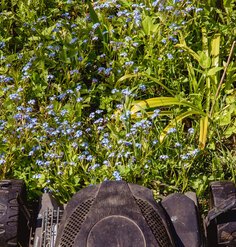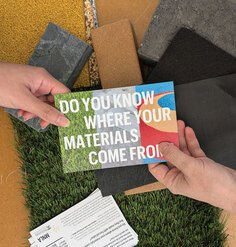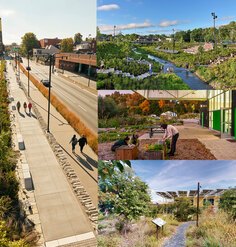From the Field: Exploring Environmental and Social Performance
By Jaryd McGonagle, MLA Candidate, Aidan Acker, Adjunct Faculty, and Maria Bellalta, Department Head, School of Landscape Architecture, Boston Architectural College
The Case Study Investigation (CSI) program has given members of our research team an excellent opportunity to collaborate with local firms in an effort to strategize techniques for assessing the performance of built projects. The resulting metrics and methodological process set a certain standard of performance for current and future works to follow. In looking at each work as a unique entity, a defined series of parameters continually shaped our research scope based on the programmatic goals that were expressed by each firm at the beginning. As the CSI research team, we are challenged to determine which factors are most significant to the success of the project as a model for future sustainable development.
Martha Schwartz/Ground Inc.’s Parc Nouvelle: Exploring Green Roof Microclimates
As the largest green roof in New England, Parc Nouvelle in Natick, MA provides unique upscale living adjacent to extensive retail activity. For our team, this project exploration has been extremely interesting and challenging, particularly at the micro-climatic level. Green roof science and construction is an evolving and rapidly growing sector of the green industry, and involves detailed attention to ensure harmony between natural ecology and built structure. Our study has focused on various parameters to qualify contributing environmental factors such as surface temperatures, wind speed, refracted and absorbed sunlight, and soil moisture levels. From a social standpoint, we had some meaningful conversations with concierge and condominium staff, who confirm that the rooftop has been a great benefit to the small, fairly tight knit residential community.
Stoss’ Erie Street Plaza: Assessing Social Benefits Through Photos
For this 0.25-acre waterfront plaza in Milwaukee, WI, the biggest challenge so far has been deriving a methodology for measuring social benefits remotely. Given that we are not able to physically experience the site, a picture study has been employed to determine how the space is being used, how frequently, and for which specific activities. By utilizing a photo library of more than 200 pictures, it was determined that in a given year, there was a specific month that fostered the most visitors participating in the widest range of activities including: biking, dining, strolling, viewing and sitting. The context of the plaza was also a key point to study in its relationship to the downtown waterfront trail, providing a critical link between mixed use development and recreation within the urban core. The Milwaukee Department of Planning has been very helpful to us in quantitatively understanding how the surrounding neighborhood has evolved as a tax increment financing (TIF) district.
Richard Burck Associates’ Watch Factory: Performance Reinvented
The Watch Factory project in Waltham, MA serves as a truly exemplary example of how landscape can be adapted to function as a performative and elegant system. As a former mid-century manufacturing complex, the building and existing landscape presented a unique challenge for the developer and architects to reinvent the property into a desirable and beautiful live-work environment. Throughout the CSI experience, Richard Burck and his staff have been wonderful to work with and provided us a wealth of information related to the project. Our team has been able to visit the site four times to witness weekday activity, study the water quality, and chat with staff and leasing personnel. Our work has involved the testing and evaluation of water quality samples discharged into the Charles River, along with studying the marine habitat of prominent fish within the river system.
Research Fellows Maria Bellalta and Aidan Acker and student Research Assistant Jaryd McGonagle are participating in LAF’s 2013 Case Study Investigation (CSI) program and working to quantify the environmental, economic, and social benefits of three diverse landscape projects. Any opinions expressed in this article belong solely to the author. Their inclusion in this article does not reflect endorsement by LAF.











